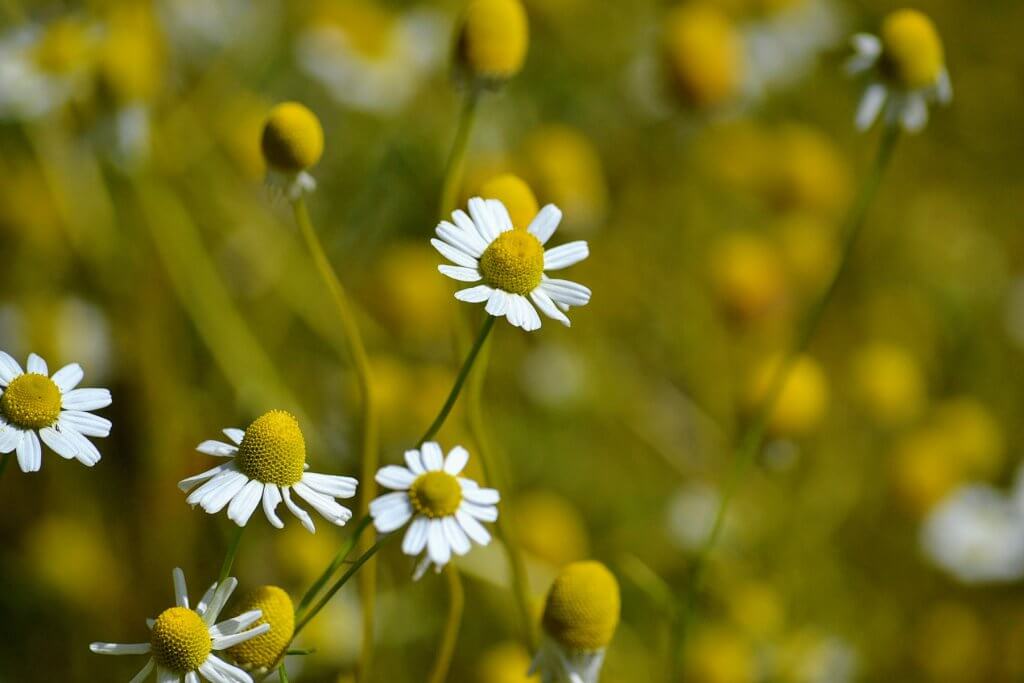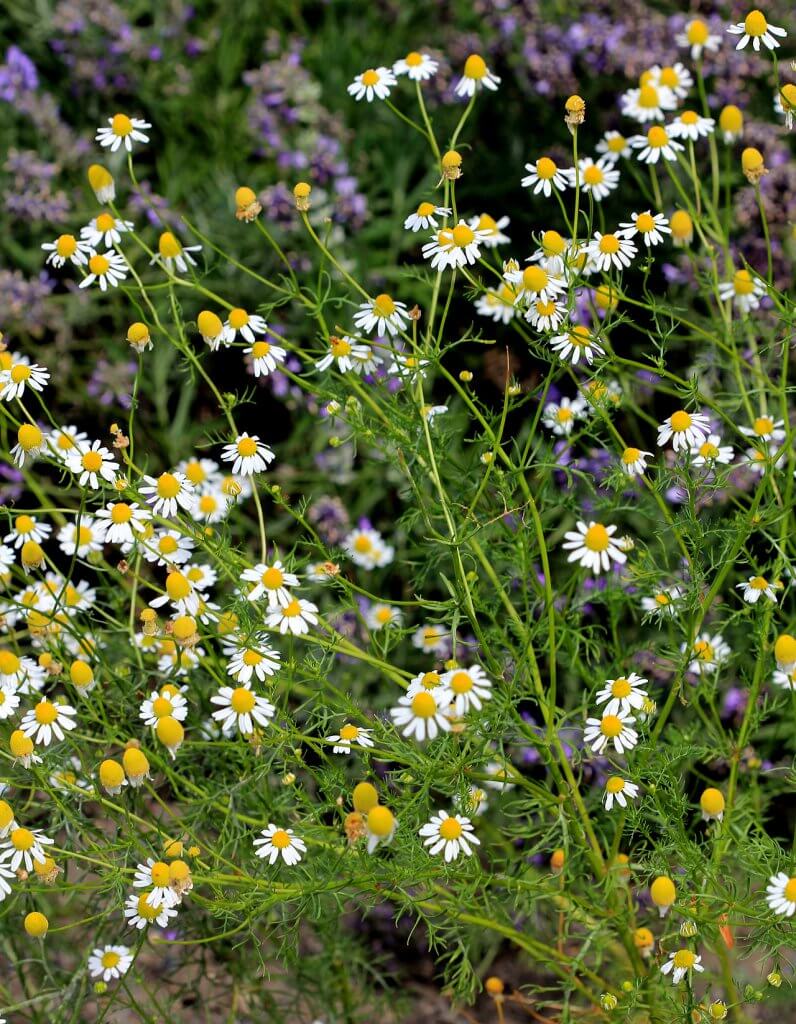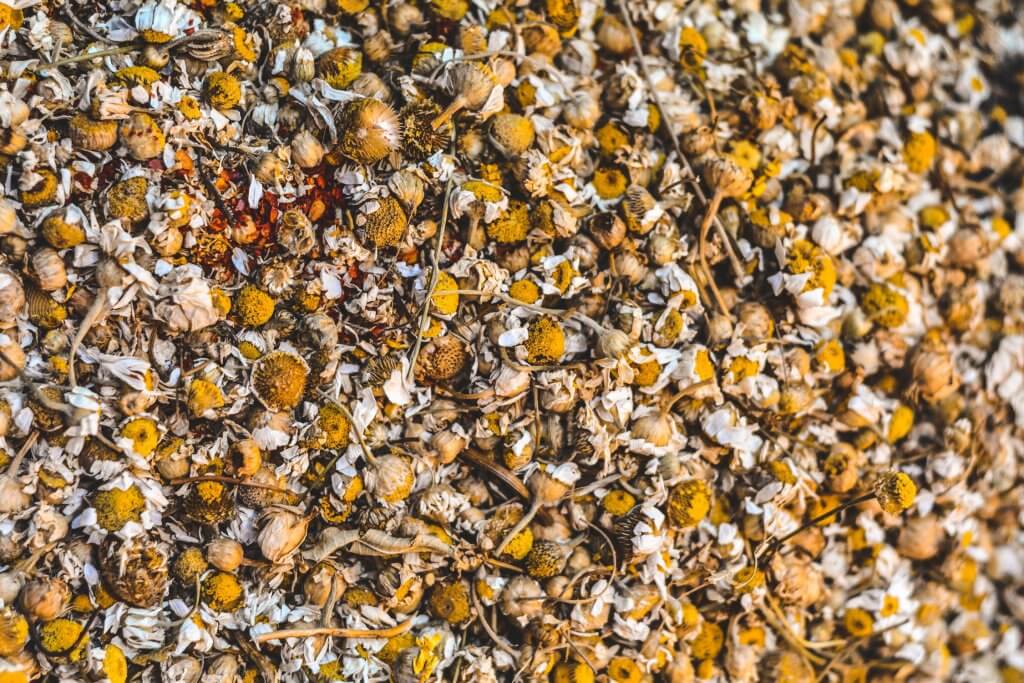Chamomile (Matricaria chamomilla) is an annual plant native to Western Europe and Asia. You can now find it growing across the world in gardens and occasionally in the wild. This is due to its escape from cultivated fields. It can now be find growing in meadows, roadsides and particularly sunny grasslands.
Other common names for chamomile include, German chamomile, Italian Chamomile, lawn chamomile and scented mayweed. It is part of the same family as the daisy. The stems of the plant will be found growing at a height of approximately 40cm. Narrow leaves line the stems, with a bright and bold flower head at the top. A dense yellow center of florets is surrounded by a circle of long, oval, white petals. The flowers have a strong scent when flowering in early to midsummer.

Cultivation and History of Chamomile

Chamomile flourishes best in full sun, so be sure to plant it in a sunny spot within your garden. The soil must also be well drained. As an annual plant it will die back when the frosts begin. However it is self seeding, so once established it should come back each year.
Start seeds indoors or plant them directly into the garden. When growing indoors, press the seeds firmly into soil in a shallow container. The seeds need light to begin germinating. After about 2 weeks seedlings will begin appearing, ready to be planted into the garden. You will not need to fertilize the plants as their roots are excellent at absorbing nutrients from the soil. This does however allow them to grow rapidly and extensively, so it may be more suited to a container.
Harvest the flowers when they have fully opened. You can use these fresh or dry and store them for later use. The leaves can also be harvested but you may find that these have a more bitter taste.
Toxicity
You can safely consume chamomile leaves and flowers. The roots are not considered edible however they are not toxic. If you are pregnant or breast feeding it is recommended to avoid chamomile as it could cause uterine contractions.
Uses
Culinary uses of Chamomile
The most popular use of chamomile is within a herbal tea. The flowers can be used alone to create a fragrant tea, or alternatively they can be mixed with other herbs. The flowers and leaves also have a history of being used in flavoring beers and ales. Many modern brewers are now looking to older recipes, including chamomile beer, for inspiration for their products.

Products created with Chamomile
Chamomile can also be used as a fragrant scent within soap products, candles, cosmetics and perfumes.
Medicinal uses of Chamomile
For thousands of years, people have used chamomile for its medicinal values. From reducing anxiety to reducing nausea and upset stomachs. Chamomile tea is still used today to provide the same benefits. Some people choose to use chamomile to help with relaxation as it does cause a sedative effect. Other uses include using chamomile as an anti-inflammatory to relieve sores and irritated skin.
Did you know…
Anglo-saxons used chamomile in their herbal remedies and medicines. It was one of 9 sacred herbs that they believed their god had bestowed upon them.
Conclusion
In conclusion, chamomile is an attractive looking plant, with dainty flowers that will brighten up your garden. Use it to fill space at the front of a border or within a rockery. Infuse the flowers with hot water to create your own soothing chamomile tea. Or try experimenting with flavors and add other herb varieties too. Chamomile tea is often recommended as a relaxing drink to help in gaining a good nights sleep.
—————Written by Hannah Sweet
Hannah is a freelance writer and graphic designer from the UK. With a penchant for travelling, photography and all things botanical, she enjoys writing about a wealth of topics and issues, from conservation and slow living, to design and travel. Learn more about her writing and design services at www.sweetmeanders.co
Many of our readers find that subscribing to Eat The Planet is the best way to make sure they don't miss any of our valuable information about wild edibles.
See our privacy policy for more information about ads on this site






